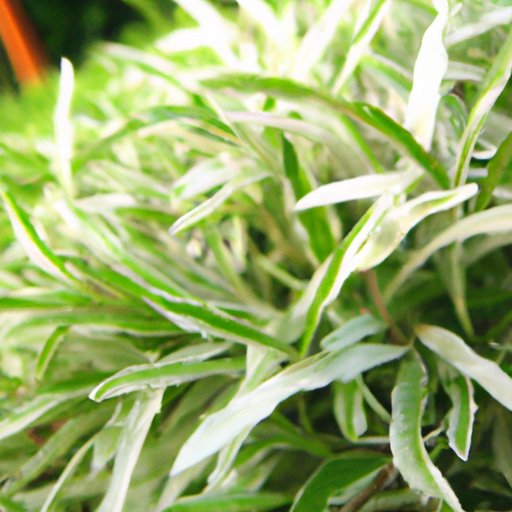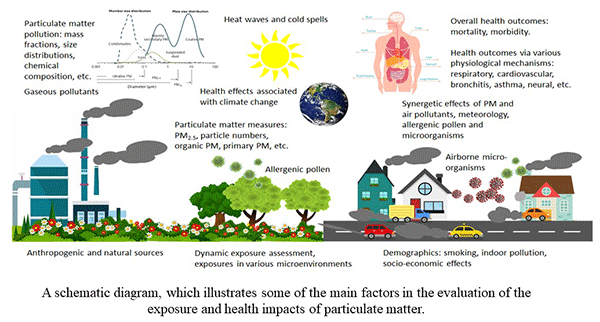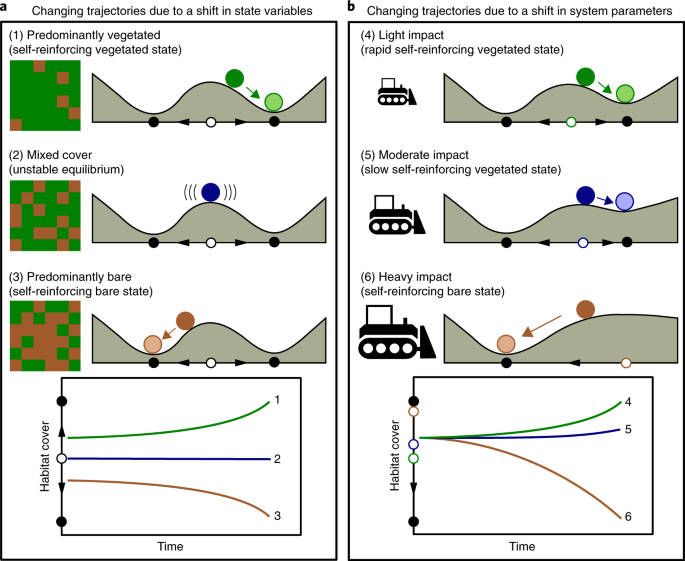Whether you’re renting an apartment or a house, having a sustainable and beautiful outdoor space is possible, even if you don’t own the property. In this article, discover a range of practical and eco-friendly landscaping tips specifically tailored for renters. From incorporating potted plants and herbs to utilizing solar-powered outdoor lights, you’ll find easy and affordable ways to transform your outdoor space into a sustainable sanctuary. So, get ready to embrace nature, conserve resources, and create a green oasis that you can enjoy during your time as a renter.
1. Choose Native Plants
Benefits of Native Plants
When it comes to sustainable landscaping, choosing native plants offers numerous benefits. Native plants are well-adapted to the local climate, soil conditions, and pests, which means they require less water, fertilizer, and pesticides compared to non-native plants. By incorporating native plants into your landscape, you not only support the local ecosystem but also reduce the need for excessive maintenance and resources.
Research Native Plants in Your Area
To make informed choices about which native plants to incorporate into your landscape, it’s important to research the native plant species in your area. Consider factors such as sunlight requirements, soil types, and the specific needs of each plant. Local botanical gardens, nurseries, and gardening organizations can provide valuable information and resources to help you select the most suitable native plants.
Consider Native Plant Associations
Another aspect to consider when choosing native plants is their natural associations in the wild. Native plants often have symbiotic relationships with other species, such as pollinators and beneficial insects. By replicating these associations in your landscape design, you can create a more sustainable and biodiverse environment. For example, planting native flowers that attract bees and butterflies can promote pollination and help support local wildlife populations.
2. Create a Water-Efficient Landscape
Install Drought-Tolerant Plants
Water scarcity is a pressing issue in many regions, making water efficiency a crucial aspect of sustainable landscaping. One way to achieve this is by incorporating drought-tolerant plants into your landscape. These plants are naturally adapted to survive in arid conditions and require minimal watering once established. Examples of drought-tolerant plants include succulents, lavender, and native grasses. By choosing these plants, you can significantly reduce your outdoor water consumption.
Group Plants with Similar Water Needs
To further optimize water efficiency in your landscape, group plants with similar water needs together. By doing so, you can avoid overwatering or underwatering certain areas and ensure that each plant receives the appropriate amount of water. For instance, grouping plants that thrive in moist soil conditions near one another allows you to water them more frequently, while grouping drought-tolerant plants in a separate area with less frequent watering can prevent unnecessary water usage.
Add Mulch to Retain Moisture
Mulching is an effective technique for conserving water in the landscape. By adding a layer of organic mulch, such as wood chips or straw, around your plants, you can minimize evaporation, suppress weed growth, and improve soil moisture retention. Mulch acts as a protective barrier, preventing water from quickly evaporating and also promoting healthy soil biology. Additionally, as the mulch breaks down over time, it adds valuable organic matter to the soil, further enhancing its moisture-holding capacity.
Use Rainwater for Irrigation
Utilizing rainwater for irrigation is not only eco-friendly but also cost-effective. Installing rain barrels or a rainwater harvesting system allows you to collect and store rainwater that can later be used to water your plants. This reduces your reliance on municipal water supplies, particularly during dry periods. Simply position a rain barrel beneath a downspout or invest in a more elaborate rainwater harvesting system to collect and store rainwater for use in your landscape.
3. Optimize Soil Health
Conduct a Soil Test
Before embarking on any landscaping project, it’s important to assess the health of your soil. A soil test can provide valuable information about the pH level, nutrient content, and structure of your soil. By understanding your soil’s characteristics, you can make informed decisions about soil amendments and fertilization, ensuring optimal plant growth and minimizing the need for excessive inputs.
Amend the Soil with Organic Matter
Improving soil health is a fundamental aspect of sustainable landscaping. One of the most effective ways to enhance soil fertility, structure, and water-holding capacity is by adding organic matter. Organic matter, such as compost or well-rotted manure, enriches the soil with essential nutrients, improves its drainage, and promotes a healthy ecosystem of soil organisms. Incorporating organic matter into your soil will ultimately reduce the need for synthetic fertilizers and pesticides, while also reducing water runoff and erosion.
Use Natural Fertilizers
When it comes to maintaining the health of your plants, using natural fertilizers is a sustainable choice. There are various organic fertilizers available, such as composted manure, bone meal, and seaweed extract, that provide essential nutrients without harming the environment. Natural fertilizers release nutrients slowly, reducing the risk of nutrient leaching and minimizing the need for frequent applications. Additionally, they improve soil structure and microbial activity, creating a more resilient and sustainable growing environment.
Practice Composting
Composting is a simple yet effective way to reduce waste, improve soil health, and recycle valuable nutrients. By collecting kitchen scraps, yard waste, and other organic materials, you can create your own compost at home. Compost is a nutrient-rich soil amendment that can be added to your garden beds, flower pots, or lawn, boosting soil fertility and reducing the need for chemical fertilizers. By practicing composting, you contribute to the circular economy and reduce your environmental footprint.
4. Implement Smart Irrigation Practices
Install a Timer
A timer is an essential tool for efficient irrigation. By installing a programmable irrigation timer, you can automate your watering schedule and ensure that your landscape receives the right amount of water at the right time. Timers allow you to schedule watering during early morning or late evening hours when evaporation rates are lower, thus maximizing water absorption and minimizing water loss.
Adjust Sprinklers and Drip Irrigation
Properly adjusting and maintaining your irrigation system is crucial for water efficiency. Make sure that sprinklers are properly aligned to avoid watering sidewalks or driveways. By adjusting the spray patterns, you can ensure that water is directed where it is needed most – to the plants. Similarly, if you have a drip irrigation system, regularly check for leaks or clogged emitters to prevent water wastage. Regular maintenance and adjustments will help you optimize your irrigation system’s efficiency.
Monitor Watering Schedule
Periodically reviewing and adjusting your watering schedule is essential, especially as weather conditions change. During cooler and rainy seasons, plants require less water, so adjusting your watering schedule accordingly helps prevent overwatering and promotes healthier plants. On the other hand, during hot and dry periods, plants may need additional water. By monitoring weather forecasts and staying attentive to your plants’ needs, you can ensure efficient water usage.
Utilize Rain Sensors
Integrating rain sensors into your irrigation system can further enhance water efficiency. These sensors detect rainfall and temporarily suspend irrigation when adequate natural precipitation has occurred. By preventing unnecessary watering during or after rainfall events, rain sensors help eliminate water waste and ensure that your plants receive only the water they require.
5. Minimize Chemical Use
Avoid Harmful Pesticides
A key aspect of sustainable landscaping is minimizing the use of harmful pesticides. Instead of relying on harsh chemicals that can harm beneficial insects, birds, and the environment, explore alternative methods for pest control. Integrated Pest Management (IPM) techniques, such as physical barriers, companion planting, and biological controls, can effectively reduce pest populations without resorting to chemical treatments.
Use Natural Pest Control Methods
Many pests can be managed using natural and eco-friendly methods. For example, introducing beneficial insects like ladybugs or lacewings, which naturally prey on garden pests, can help maintain a balanced ecosystem. Additionally, homemade pest control sprays using ingredients like neem oil or soap can effectively control pests without harming the environment. By prioritizing natural pest control methods, you can maintain a healthy and sustainable landscape while reducing chemical inputs.
Utilize Integrated Pest Management
Integrated Pest Management (IPM) is a holistic approach to pest control that focuses on prevention, monitoring, and intervention based on the specific needs of your landscape. By combining various strategies, such as cultural practices, biological controls, and targeted pesticide applications only when necessary, you can effectively manage pests while minimizing the environmental impact. Implementing IPM techniques promotes biodiversity and reduces reliance on chemical pesticides.
Choose Organic Lawn Care Products
Maintaining a healthy lawn can be achieved through organic lawn care practices that minimize chemical use. When selecting lawn care products, opt for organic or natural alternatives to synthetic fertilizers and herbicides. Organic fertilizers release nutrients slowly, promoting steady growth and reducing the risk of nutrient runoff. Likewise, natural weed control methods, such as hand weeding or applying corn gluten meal, can effectively control weeds without compromising the health and sustainability of your lawn.
6. Encourage Biodiversity
Provide Habitat for Wildlife
One of the joys of sustainable landscaping is creating a habitat that encourages wildlife to thrive. By incorporating elements such as bird feeders, birdbaths, and bat houses into your landscape, you can attract beneficial wildlife and support the local ecosystem. Providing nesting sites, food sources, and water for birds, butterflies, bees, and other pollinators contributes to biodiversity and promotes a healthy balance within your outdoor space.
Plant a Variety of Flowers
When selecting plants for your landscape, opt for a diverse range of flower species. The abundance of flowers not only adds color and beauty to your landscape but also provides nectar and pollen sources for pollinators. Choose flowering plants that bloom at different times throughout the year to ensure a continuous food supply for bees, butterflies, and other beneficial insects. By creating a floral haven, you can play a vital role in supporting declining pollinator populations.
Incorporate Native Grasses
Including native grasses in your landscape design offers multiple benefits. Native grasses are resilient, low-maintenance, and well-adapted to the local environment. They provide important habitat and food sources for birds, insects, and small mammals. Moreover, native grasses help stabilize soil, prevent erosion, and reduce the need for mowing and maintenance. By incorporating native grasses, you can create an aesthetically pleasing and environmentally friendly landscape.
Create a Butterfly or Bee Garden
Butterfly and bee gardens are specifically designed to attract and support these essential pollinators. By selecting a variety of nectar-rich flowers and incorporating other features like shallow water sources and suitable shelter, you can create an inviting habitat for butterflies and bees. These gardens not only enhance biodiversity but also contribute to the pollination of plants in your landscape and the surrounding area.
7. Conserve Water through Landscape Design
Design Water-Saving Features
Incorporating water-saving features into your landscape design can significantly reduce water consumption. Consider installing features such as rain gardens, bioswales, and retention ponds that capture and absorb rainwater on-site. These water-saving designs allow rainwater to infiltrate the soil, replenishing groundwater resources and minimizing runoff. By managing water efficiently, you can create a visually appealing landscape while conserving this precious resource.
Use Permeable Pavement
If you have hardscape areas like patios, walkways, or driveways, opt for permeable pavement materials instead of solid concrete or asphalt. Permeable pavements, such as porous concrete or gravel, allow rainwater to penetrate the surface, reducing water runoff and promoting groundwater recharge. This environmentally friendly option helps prevent stormwater runoff from carrying pollutants into nearby water bodies and helps to conserve water resources.
Install Rain Barrels
Installing rain barrels is a simple yet effective way to capture rainwater for future use. By positioning rain barrels beneath downspouts, you can collect rainfall from your roof, which can then be used for watering plants or other outdoor purposes. Rain barrels not only conserve water but also help reduce stormwater runoff, easing the burden on local water infrastructure during heavy rainfall events. They offer a practical solution for eco-conscious gardeners looking to make the most of rainwater.
Consider a Green Roof or Living Wall
For more advanced water conservation, consider incorporating green roofs or living walls into your landscape. Green roofs involve planting vegetation on the roof of a building, providing insulation, reducing stormwater runoff, and promoting biodiversity. Living walls use specially designed structures to support vertical gardens, offering similar benefits while also reducing the urban heat island effect. Both green roofs and living walls enhance the aesthetic appeal of your property while maximizing water conservation.
8. Maintain an Eco-Friendly Lawn
Mow High and Less Frequently
When it comes to mowing your lawn, adjusting your mowing height and frequency can make a significant difference. Set your mower blades to a higher setting, allowing grass to grow taller. Longer grass shades the soil, reducing weed competition and promoting deeper root growth, which leads to a healthier and more drought-tolerant lawn. Additionally, mowing less frequently helps conserve energy and minimizes emissions from gas-powered mowers.
Leave Grass Clippings on the Lawn
Rather than bagging and disposing of grass clippings, consider leaving them on the lawn. Grass clippings quickly decompose, returning valuable nutrients to the soil and acting as a natural fertilizer. This simple practice, known as grasscycling, reduces the need for synthetic fertilizers and helps maintain a healthy and green lawn. As long as the clippings are not excessively thick, they will break down quickly and contribute to the overall health of your lawn.
Aerate and Overseed
Regularly aerating your lawn can improve soil compaction and ensure proper water penetration. Aeration involves creating small holes in the soil, allowing air, water, and nutrients to reach the grass roots easily. This promotes root growth, resulting in a healthier and more resilient lawn. Additionally, overseeding your lawn with appropriate grass varieties helps fill in bare spots, increase density, and prevent weed invasion, creating a lush and sustainable lawn.
Practice Integrated Pest Management
When it comes to pest management, an integrated approach is vital for maintaining an eco-friendly lawn. Implementing cultural practices, such as proper watering and mowing techniques, helps prevent pest problems by promoting a healthy and resilient lawn. Regular monitoring for signs of pests and timely intervention, such as adjusting irrigation or applying targeted treatments if necessary, can effectively control pests while minimizing environmental impact.
9. Choose Sustainable Garden Structures
Opt for Recycled Materials
When selecting garden structures, opt for those made from recycled materials. Many companies offer furniture, planters, and other outdoor structures that are crafted from recycled plastics, metals, or wood. Choosing these eco-friendly options helps reduce waste and supports the circular economy. By utilizing recycled materials, you contribute to a sustainable and environmentally conscious approach to landscaping.
Use FSC-Certified Wood
If you prefer wooden structures for your garden, ensure that the wood is certified by the Forest Stewardship Council (FSC). FSC certification ensures that the wood comes from responsibly managed forests, where biodiversity and ecological values are protected. By choosing FSC-certified wood, you support sustainable forestry practices and help preserve natural resources for future generations.
Invest in Quality and Long-Lasting Structures
When investing in garden structures, such as trellises, arbors, or pergolas, prioritize quality and durability. Opt for structures made from materials that are designed to withstand the elements and require minimal maintenance. By choosing well-made and long-lasting structures, you reduce the need for frequent replacements, minimize waste, and contribute to a more sustainable and environmentally-friendly landscape.
Utilize Vertical Gardening
Vertical gardening is a space-efficient and visually appealing way to maximize your growing area. By utilizing walls, fences, or other vertical structures, you can grow plants vertically, creating a vibrant and lush garden in a limited space. Vertical gardening reduces the need for expansive land use and can be particularly advantageous for urban or small-scale gardens. It’s an innovative and sustainable approach to gardening that adds aesthetic value while minimizing your environmental footprint.
10. Educate and Collaborate with Landlords
Share the Benefits of Sustainable Landscaping
If you are a renter, you can take an active role in advocating for sustainable landscaping practices to your landlord. Educate them about the numerous benefits, such as water and energy conservation, cost savings, and environmental stewardship. By highlighting the advantages of sustainable landscaping, you can encourage your landlord to adopt more eco-friendly practices that benefit both the property and the planet.
Offer to Assist with Implementation
To further promote sustainable landscaping, offer to assist your landlord with the implementation of these practices. Share your knowledge, resources, and experiences to help them make informed decisions about native plants, water-efficient irrigation systems, or soil health improvements. By offering your help, you demonstrate your commitment to sustainable living and create an opportunity for positive change.
Provide Cost Analysis and Savings
One of the concerns landlords may have about sustainable landscaping is its cost. However, presenting a cost analysis and highlighting the potential savings can alleviate these concerns. Show your landlord how sustainable landscaping practices, such as water conservation measures or reduced chemical inputs, can lead to long-term cost savings. For example, using rainwater for irrigation can significantly reduce water bills, while minimizing the use of chemical fertilizers saves on both product costs and potential environmental cleanup expenses.
Collaborate on Design and Maintenance
Collaborating with your landlord on landscape design and maintenance provides an opportunity to merge sustainable practices with their aesthetic preferences. By involving the landlord in the decision-making process, you can ensure that the landscape reflects their vision while integrating sustainable elements. Additionally, offering to assist with ongoing maintenance, such as mulching, composting, or mowing, demonstrates your commitment to stewarding the landscape in an environmentally responsible manner.
In conclusion, sustainable landscaping for renters offers a multitude of benefits for both individuals and the environment. By choosing native plants, creating water-efficient landscapes, optimizing soil health, implementing smart irrigation practices, minimizing chemical use, encouraging biodiversity, conserving water through landscape design, maintaining an eco-friendly lawn, choosing sustainable garden structures, and collaborating with landlords, renters can contribute to a more sustainable and environmentally conscious approach to landscaping. Embracing these practices not only helps conserve resources, reduce waste, and support biodiversity but also creates an aesthetically pleasing and harmonious outdoor space that promotes well-being and connects us to the natural world. So, seize the opportunity to make a positive impact and create a sustainable landscape that you can enjoy for years to come.





